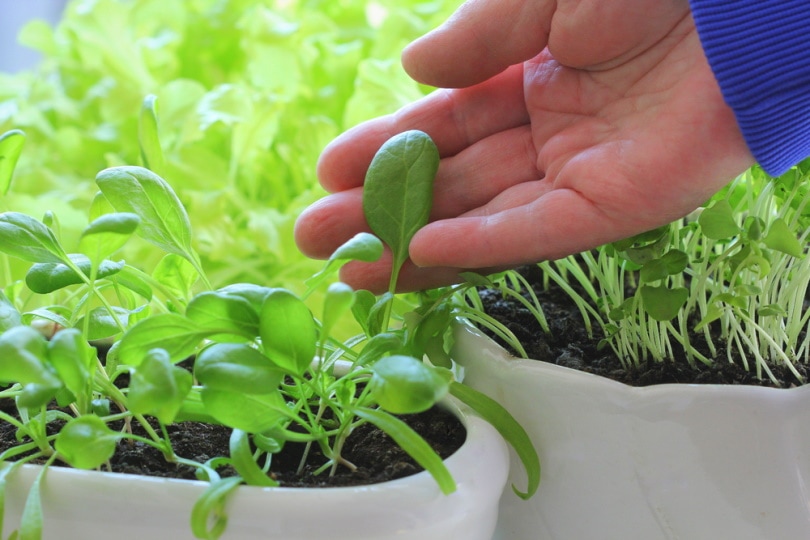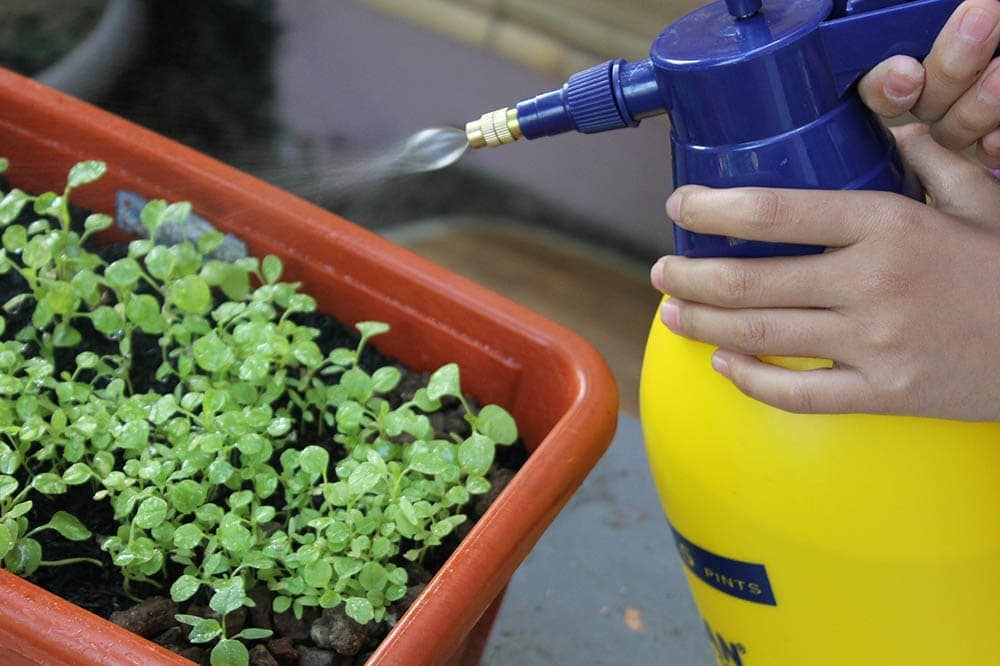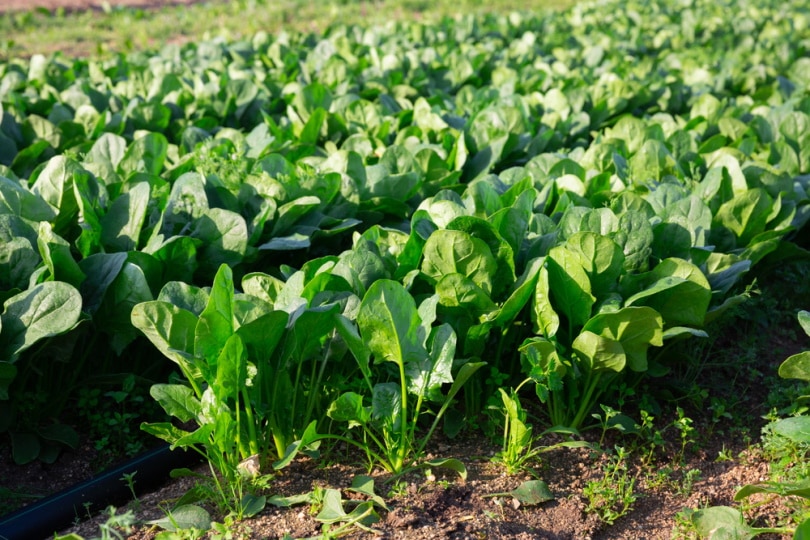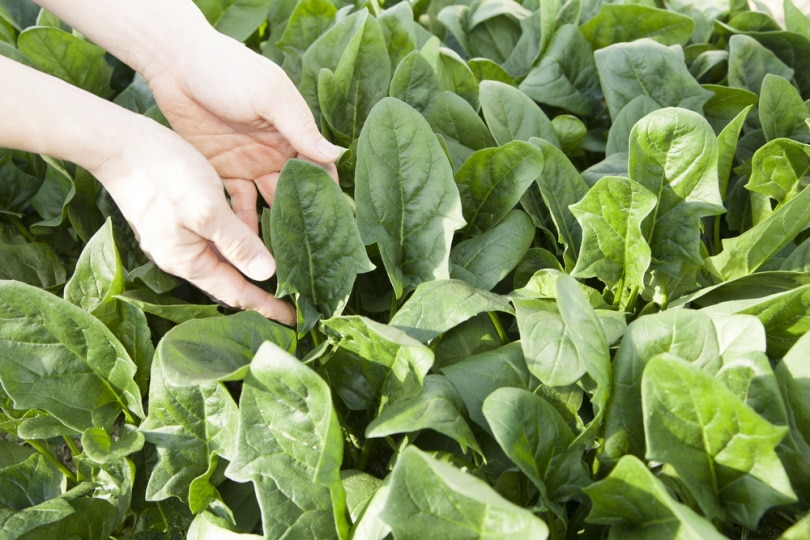How & When To Plant Spinach: Varieties, Tips, & FAQ
-
Visnja Radosavljevic
- Last updated:

Spinach is a tasty, nutritious vegetable that is not too difficult to grow and everyone should be able to grow it without much effort. Of course, it’s much easier to do so when you know tips and tricks regarding how and when to plant it.
If you’re considering planting spinach, but would like to know more about the process, read the rest of the article. We will mention essential points that will help you to grow spinach successfully.
Is It Easy to Grow Spinach?
Growing spinach is pretty easy if you know what you are doing. It’s a fast-growing, cool-season plant containing valuable nutrients and vitamins, perfect for cooking and making salads. Since it grows pretty fast, you should be able to harvest it in about a month after planting, depending on the variety.

Spinach Types and Popular Varieties
There are various spinach varieties with different looks and tastes. Typically, spinach leaves are smooth and can be in all shades of green. There are three main spinach types:
- Smooth-leafed spinach: The most popular spinach type that many people love to use. This spinach type has a sweet flavor and smooth leaves.
- Savoy spinach: The most productive spinach type that deals with cold weather much better than the other two spinach types. It grows pretty low, so you’ll have to bend to clean and harvest the leaves.
- Semi-savoy spinach: This spinach type grows more upright compared to savoy spinach, and it stands straighter than the other two spinach types. This type has less crinkly leaves, which makes them easier to wash.
Some of the most popular spinach varieties are:
- Baby-leaf
- Malabar
- Auroch
- Palco
- Regiment
- Bloomsdale
- Tyee

What’s the Best Time to Plant Spinach?
The planting time depends on whether your spinach variety is summer or winter type. Typically, spinach needs around 6 weeks of cold weather from planting to harvest, and you can sow it as soon as the ground temperature reaches 40°F.
It’s best to plant summer varieties every couple of weeks, keeping them protected from February and unprotected from March to May.
When it comes to winter varieties, it’s best to plant them in late summer (preferably August) and early fall (preferably September.)
Planting Spinach
The first step in the spinach growing process is to plant the seeds. Before the beginning, you should try to make your soil richer with nutrients. It would be helpful to compost the area before sowing to ensure the quality and tastiness of your spinach. Depending on your options and available space, you can grow it both indoors and outdoors.
Either sow the seeds outdoors or in containers and pots. If you’re planting them outside, space the seeds 1 foot apart and plant them in 1-inch holes to allow the spinach to grow undisturbed.
If you decide to grow spinach indoors, it’s best to plant them in the fall and place them on a windowsill. That way, they will get enough sunlight, although you can also plant them in spring, which will require you to provide the plants with enough shade. When placing spinach in pots to grow it indoors, sow it in a 6-inch deep pot and place the seeds ½ an inch under the soil.

Spinach Requirements
For your spinach to grow and be healthy, you must meet certain environmental criteria that suit this vegetable. Below, you can see the perfect soil, light, water, temperature, and fertilization requirements for growing spinach.
- Soil: Spinach needs moist, loamy, well-drained soil that’s rich in nutrients to prosper. It’s best to fertilize or compost the soil in the planting area to increase the quality of your spinach.
- Light: Depending on its variety, your spinach will need full sun or partial shade to thrive. Most spinach varieties should get around 4 hours of direct sun exposure, but you should protect them from the strong sun in the afternoon.
- Water: Since the soil for spinach needs to be moist, you’ll need to water the area frequently. Of course, that doesn’t mean you should overdo it and make the soil soggy. Typically, spinach needs about 1 inch of water weekly, and you can divide that into multiple weekly waterings. You can also add mulch to the area to keep the soil moist.
- Temperature: Spinach grows best at temperatures between 50°F and 60°F, and it cannot tolerate extreme temperatures. However, young seedlings are more frost tolerant and can survive temperatures between 15°F and 20°F.
- Fertilization: Since spinach grows quite fast, it also needs a lot of fertilization to promote healthy foliage. You can make natural composts or use store-bought fertilizers with high nitrogen concentrations.
Growing Spinach
Once you plant the spinach, you should provide enough care and maintenance for it to grow well. Compost tea and fish emulsions are the best for this plant as they will promote growth and enhance flavor.
Many people who grow spinach tend to have issues with weeds, which you can avoid by placing a mulch of grass clippings, hay, or straw. If the temperatures in your area go over 80°F, you should cover the spinach with shade cloth to prevent the soil from drying out.
Another important thing is to protect your spinach from pests and diseases, which are common issues when growing this vegetable.

How long does spinach take to grow?
Typically, you can harvest most spinach varieties 6–10 weeks after planting them. Most people harvest summer spinach varieties from May to October, while they harvest winter varieties from October to April. Of course, you should be on the lookout and regularly check your spinach as it can grow faster in warm temperatures.
Harvesting Spinach
Your spinach will be harvest-ready pretty quickly if you follow all the guidelines in the article. Once the spinach leaves are large enough to pick, you can continually harvest them. You will gain more product by trimming off individual leaves and harvesting only mature ones while leaving the young ones to keep growing. You can also cut the whole plant, just 1 inch above the crown, which will allow it to gain new leaves.
Harvest time for summer spinach varieties: May to October
Harvest time for winter spinach varieties: October to April
After the harvest, you can finally enjoy the fruits of your labor. There are tons of different recipes where you can include spinach while feeling proud of all the hard work you’ve put into the whole growing process!

Is Spinach Prone to Pests and Diseases?
Although there are many durable spinach varieties, most of them are prone to pests and diseases, so you should be on the lookout and maintain your spinach healthy.
Some of the most common pests that attack spinach are:
- Flea beetles: They typically feed on foliage and create a lot of small holes in the leaves. A sheet of aluminum foil under your spinach should prevent them from damaging the plant.
- Snails and slugs: They also leave small holes in the foliage. Luckily, there are traps and bait you can use to trap slugs and snails.
- Cutworms and wireworms: They feed on the roots and foliage. It might be helpful to plant carrots near the spinach and trap the worms by pulling out the infected carrots.
- Leaf miners: They feed inside the leaves, which makes them hard to kill. If you notice leaf miners, it’s best to cut off the infested leaves.
- Aphids: One of the most common pests that attack spinach. You can use neem oil or insecticides to keep them away.

Pests are typically easy to get rid of, and they shouldn’t cause a lot of trouble. Diseases are more dangerous so you should know how to recognize them. The most common spinach diseases are:
- Downy mildew
- Damping-off
- Root rot
- Anthracnose
- Viruses
Most of these problems occur due to environmental conditions and issues when growing the plant. Still, if you follow the given instructions, your spinach will undoubtedly be both healthy and flavorful.
Final Thoughts
Spinach is a low-maintenance, delicious vegetable, so everyone who likes to eat it should try to grow it at home. By following some simple tips, tricks, and guidelines, you can successfully grow tasty spinach that you and your family will love eating. Don’t forget to read out guidelines again, and begin your spinach-planting adventure!
- “Growing spinach” +
- “Planting, growing, and harvesting spinach” +
- “Spinach”
- “How to grow spinach – in pots, indoors or in raised beds”
- “How to grow the tastiest spinach ever”
- “How to grow spinach”
- “How do I grow spinach”
- “How to grow spinach”
- “Common Spinach Problems: Dealing With Spinach Pests And Diseases”
Featured Image Credit: vaivirga, Shutterstock
Contents
